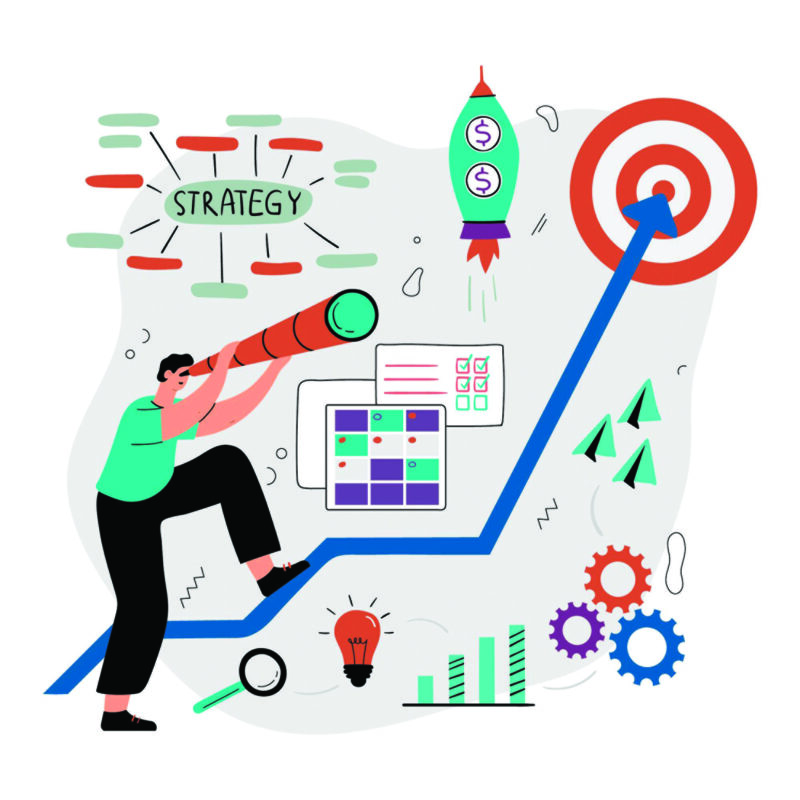This article delves into the key challenges in sales and provides insights on how sales teams can overcome them, stay ahead of the curve, and achieve sustainable growth.
Intense Competition and Market Saturation :
One of the most significant challenges in sales is the presence of intense competition and market saturation. In almost every industry, businesses face fierce competition from both traditional and emerging players. This scenario can make it difficult for sales teams to differentiate their offerings and capture the attention of potential customers.
To overcome this challenge, sales professionals must focus on understanding their target market thoroughly. By conducting comprehensive market research, identifying unique selling propositions, and tailoring their value propositions to specific customer segments, sales teams can effectively differentiate themselves from competitors.
Additionally, building strong relationships with customers, providing exceptional customer service, and continuously innovating products or services can help organizations stand out in a crowded marketplace.
Evolving Buyer Expectations and Needs :
Buyer expectations and needs are constantly evolving in response to technological advancements, changing market trends, and a growing emphasis on personalized experiences. Sales teams must adapt to these evolving expectations to remain relevant and successful.
Today’s buyers are more informed than ever before, conducting extensive research online before engaging with sales representatives. This trend poses a challenge for sales professionals who must demonstrate expertise, provide value, and offer personalized solutions that align with the buyer’s unique needs.
Embracing a consultative selling approach, understanding the buyer’s journey, and leveraging data-driven insights can enable sales teams to address these challenges. By building trust, actively listening to customers, and customizing solutions, sales professionals can forge strong relationships and secure long-term partnerships.
Sales Technology and Automation:
Advancements in technology have revolutionized the sales landscape, presenting both opportunities and challenges. While sales automation tools and customer relationship management (CRM) systems enhance efficiency and streamline processes, they also demand a significant investment in terms of time, resources, and training.
Organizations must strike a balance between utilizing technology to its fullest potential and ensuring that the human touch and relationship-building aspects of sales are not neglected. Sales teams need to embrace technology as an enabler rather than a replacement for personal interactions. By leveraging analytics, AI-powered tools, and automation, sales professionals can optimize their processes, identify trends, and enhance decision-making.
However, it is crucial to remember that sales success still hinges on building genuine connections, providing personalized experiences, and empathetically addressing customer needs.
Resistance to Change and Internal Alignment :
Implementing changes within an organization can be met with resistance from sales teams, especially if they perceive them as disruptive or unnecessary. Resistance to change can hinder the adoption of new sales strategies, methodologies, or technologies. It is vital for sales leaders and managers to effectively communicate the rationale behind the changes, emphasize the benefits, and provide necessary training and support to facilitate a smooth transition.
Furthermore, achieving internal alignment across departments, such as marketing and customer service, is essential for ensuring a consistent customer experience. Breaking down silos, fostering collaboration, and encouraging cross-functional communication can help organizations overcome this challenge and align their efforts toward a common sales objective.
Lengthy Sales Cycles and Decision-Making Processes :
Sales cycles have become increasingly complex and lengthy, particularly in industries with high-value products or services. Multiple stakeholders, bureaucratic decision-making processes, and budgetary constraints can significantly extend the sales cycle, leading to frustration for sales teams. To address this challenge, sales professionals need to adopt a strategic and proactive approach. It is crucial to identify key decision-makers early in the sales process and understand their specific needs, concerns, and decision-making criteria. By establishing strong relationships with influencers and gatekeepers within the organization, sales teams can navigate the decision-making process more efficiently.
Additionally, sales professionals should focus on providing value at each stage of the sales cycle, offering compelling solutions, and demonstrating a clear return on investment (ROI). Implementing sales acceleration techniques, such as targeted content marketing, personalized demos, and proof of concept, can help shorten sales cycles and expedite the decision-making process.
Sales Team Productivity and Skill Development :
Maintaining a high level of sales team productivity and ensuring continuous skill development are perennial challenges in the sales domain. Sales professionals must constantly adapt to new selling techniques, industry trends, and evolving customer needs. However, limited training resources, a lack of ongoing coaching, and high turnover rates can hinder skill development and impact sales performance.
To overcome this challenge, organizations should prioritize investing in training and development programs for their sales teams. By providing comprehensive product knowledge training, sales methodologies, and continuous coaching, organizations can equip their sales professionals with the skills needed to excel in their roles. Regular performance reviews, constructive feedback, and mentorship programs can contribute to individual growth and motivation. Furthermore, leveraging technology-enabled learning platforms, virtual training sessions, and gamification techniques can enhance engagement and knowledge retention among sales teams.
A culture of learning and development should be fostered within the organization, encouraging sales professionals to take ownership of their growth and stay updated with industry trends through networking events, conferences, and online resources.
To conclude. I would like to say that in a rapidly evolving business landscape, the challenges faced by sales professionals are diverse and demanding. However, by recognizing these challenges as opportunities for growth and adopting proactive strategies, sales teams can navigate the competitive landscape and achieve remarkable results. Embracing differentiation, personalized experiences, leveraging technology as an enabler, fostering internal alignment, addressing lengthy sales cycles, and investing in skill development are essential steps toward overcoming the challenges in sales. Ultimately, organizations that prioritize a customer-centric approach, nurture strong relationships, and empower their sales teams with the right tools, knowledge, and support will be well-equipped to excel in today’s sales environment.
By continuously adapting, learning, and evolving, sales professionals can transform challenges into stepping stones for success, driving revenue growth, and establishing long-term customer partnerships.
OverComing the Challenges :
While there are challenges that we face in sales, here are a few of the recommended strategies that businesses can adopt, according to their need and scale.
Challenge 1 : Intense Competition and Market Saturation
- Conduct thorough market research to identify gaps and opportunities in the market.
- Develop a unique value proposition that differentiates your offerings from competitors.
- Tailor your marketing and sales messaging to specific customer segments.
- Build strong relationships with customers by providing exceptional customer service.
- Continuously innovate your products or services to stay ahead of the competition.
Challenge 2 : Evolving Buyer Expectations and Needs
- Embrace a consultative selling approach by understanding the buyer’s pain points and needs.
- Stay informed about industry trends and technological advancements.
- Leverage data-driven insights to personalize the sales experience.
- Provide value-added content and thought leadership to educate and engage buyers.
- Nurture long-term relationships through consistent communication and follow-up.
Challenge 3 : Sales Technology and Automation
- Embrace technology as an enabler to enhance efficiency and effectiveness.
- Invest in sales automation tools and CRM systems to streamline processes.
- Provide comprehensive training and support for sales teams to adapt to new technologies.
- Maintain a balance between technology and human touch by prioritizing personalized interactions.
- Use analytics and AI-powered tools to gain insights and make data-driven decisions.
Challenge 4 : Resistance to Change and Internal Alignment
- Communicate the rationale behind changes and emphasize the benefits for sales teams.
- Provide training and support to help sales professionals adapt to new strategies or technologies.
- Foster a culture of collaboration and cross-functional communication within the organization.
- Break down silos between departments, such as marketing and customer service, to ensure a consistent customer experience.
- Align sales objectives with overall organizational goals and create a shared vision.
Challenge 5 : Lengthy Sales Cycles and Decision-Making Processes
- Identify key decision-makers early in the sales process and understand their needs and concerns.
- Build relationships with influencers and gatekeepers within the organization.
- Provide compelling solutions and demonstrate a clear ROI to accelerate the decision-making process.
- Implement sales acceleration techniques, such as targeted content marketing and personalized demos.
- Stay engaged throughout the sales cycle, addressing objections and concerns promptly.
Challenge 6 : Sales Team Productivity and Skill Development
- Invest in comprehensive training programs to enhance product knowledge and sales methodologies.
- Provide ongoing coaching, mentorship, and constructive feedback to support skill development.
- Conduct regular performance reviews and create individualized development plans.
- Utilize technology-enabled learning platforms and gamification techniques for engaging and effective training.
- Foster a culture of continuous learning and encourage sales professionals to stay updated with industry trends.
By implementing these strategies, organizations can proactively address the challenges in sales and create an environment conducive to sustainable growth and success.


